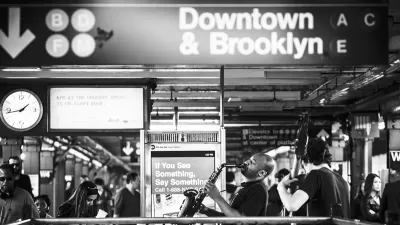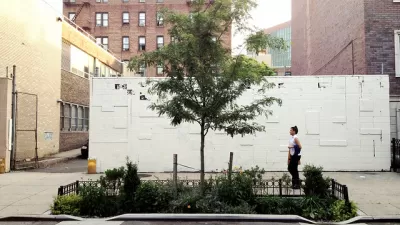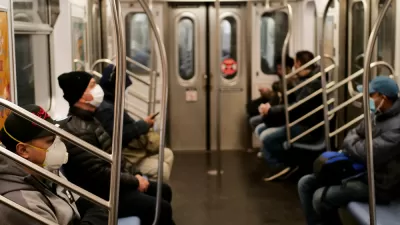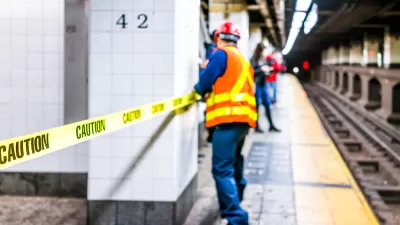While the New York subway's need for infrastructure investment is well documented, it was an improperly placed rail that caused two subway cars to derail on a southbound A train on Tuesday morning in Harlem.

The Metropolitan Transportation Authority "is now checking rails across the system to make sure replacement parts are being properly stored," report Jonathan Wolfe and Emma G. Fitzsimmons for The New York Times in one of several articles on the June 21 derailment.
The accident, which left at least 34 people injured [Planetizen put the number at 37] took place between the 135th Street and 125th Street stations. Two cars jumped the tracks after the emergency brakes were activated, officials said.
Human error was also the cause of a derailment almost two decades ago, on July 3, 1997, that occurred on the A Train line injuring 13 passengers and two firefighters.
A southbound A train jumped the track as it passed through 135th Street station at St. Nicholas Avenue. A worker who was fixing the switches at the station had accidentally flipped a switch for the wrong track.
The derailment added a new dimension to the concerns of the almost six million weekday commuters who rely on the nation's largest subway. "Until Tuesday, the main concern for riders had been long and unpredictable delays in a fraying system," report Fitzsimmons and Marc Santora in an earlier piece. "But in a flash, the concern shifted from inconvenience to questions about basic safety."
While human error was the cause of these two derailments, aging equipment in the 112-year-old system is causing delays plaguing every line. However, "it is not the No. 1 reason," report Fitzsimmons, Ford Fessenden, and K.K. Rebecca Lai in a related article.
The major cause of subway delays is a factor that basically did not exist 15 years ago: overcrowding. The subway is a victim of its own success and the city's resurgence. Large crowds slow down trains, which creates more crowding in a vicious circle that takes hours to unwind during every rush.
The article has a chart showing delays attributed to overcrowding, track maintenance, and signal failures or other track problems. The reporters chronicle the increase in subway ridership, which has reached "the highest level since the 1940s."
FULL STORY: New York Today: Derailment Answers and Your Commute

Montreal Mall to Become 6,000 Housing Units
Place Versailles will be transformed into a mixed-use complex over the next 25 years.

Planetizen Federal Action Tracker
A weekly monitor of how Trump’s orders and actions are impacting planners and planning in America.

DARTSpace Platform Streamlines Dallas TOD Application Process
The Dallas transit agency hopes a shorter permitting timeline will boost transit-oriented development around rail stations.

Interactive Map Reveals America's “Shade Deserts”
Launched by UCLA and American Forests to combat heat-related deaths, the tool maps the shade infrastructure for over 360 U.S. cities.

Bicycles and Books — In Sacramento, Libraries Now Offer Both
Adult library card holders can check out e-bikes and e-trikes for up to one week.

Colorado Landfills Emit as Much Pollution as 1M Cars
Landfills are the third-largest source of methane pollution in Colorado, after agriculture and fossil fuel extraction.
Urban Design for Planners 1: Software Tools
This six-course series explores essential urban design concepts using open source software and equips planners with the tools they need to participate fully in the urban design process.
Planning for Universal Design
Learn the tools for implementing Universal Design in planning regulations.
City of Mt Shasta
City of Camden Redevelopment Agency
City of Astoria
Transportation Research & Education Center (TREC) at Portland State University
US High Speed Rail Association
City of Camden Redevelopment Agency
Municipality of Princeton (NJ)





























